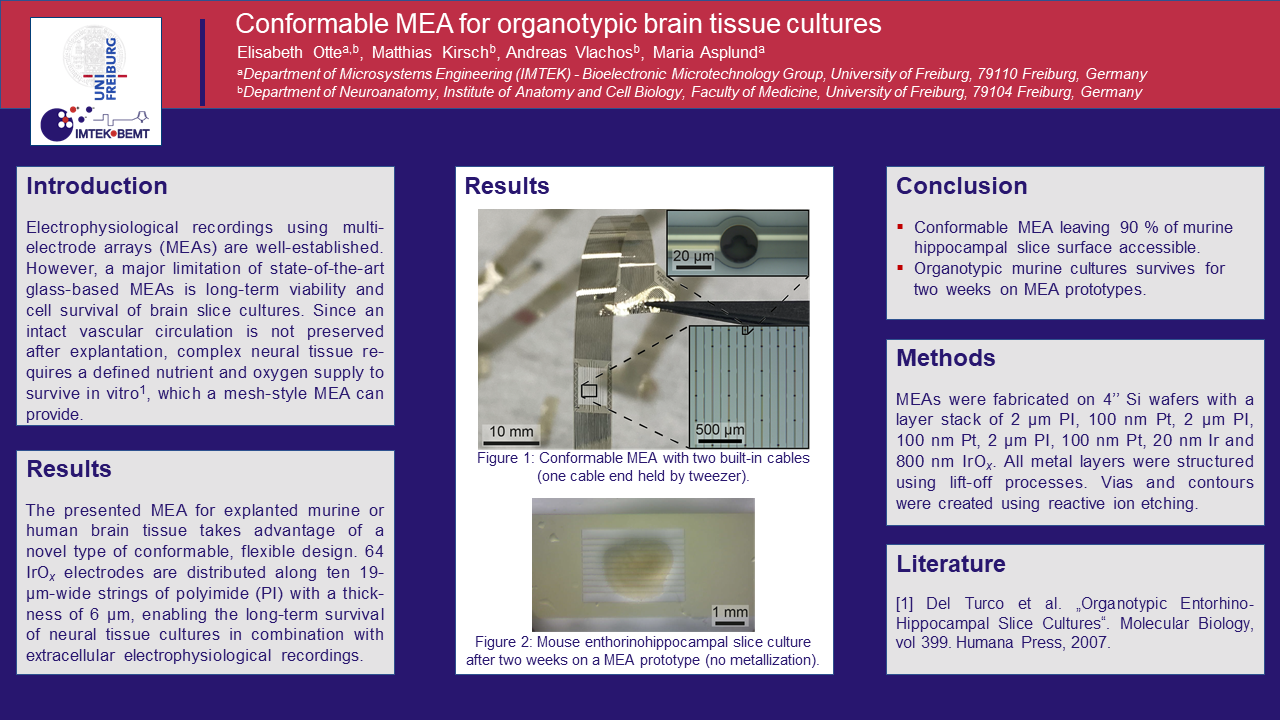Conformable MEA for organotypic brain tissue cultures
Elisabeth Otte a, Matthias Kirsch b, c, Andreas Vlachos b, c, d, Maria Asplund a, c, e, f
a Department of Microsystems Engineering (IMTEK) - Bioelectronic Microtechnology Group, University of Freiburg, 79110 Freiburg, Germany.
b Department of Neuroanatomy, Institute of Anatomy and Cell Biology, Faculty of Medicine, University of Freiburg, 79104 Freiburg, Germany
c Center BrainLinks‑BrainTools, University of Freiburg, Freiburg, Germany
d Center for Basics in Neuromodulation (NeuroModulBasics), Faculty of Medicine, University of Freiburg, Freiburg, Germany
e Division of Nursing and Medical Technology, Luleå University of Technology, Luleå, Sweden
f Freiburg Institute for Advanced Studies (FRIAS), University of Freiburg, Freiburg, Germany
Poster, Elisabeth Otte, 022
Publication date: 14th January 2022
ePoster: 
Electrophysiological recordings using multi-electrode arrays (MEAs) are well-established. However, a major limitation of state-of-the-art glass-based MEAs is long-term viability and cell survival of brain slice cultures. Since an intact vascular circulation is not preserved after explantation, complex neural tissue requires a defined nutrient and oxygen supply to survive in vitro (del Turco and Deller 2007), which a mesh-style MEA can provide.
The presented MEA for explanted murine or human brain tissue takes advantage of a novel type of conformable, flexible design. 64 IrOx electrodes are distributed along ten 19-µm-wide strings of polyimide (PI) with a thickness of 6 µm, enabling the long-term survival of neural tissue cultures in combination with extracellular electrophysiological recordings.
© FUNDACIO DE LA COMUNITAT VALENCIANA SCITO
